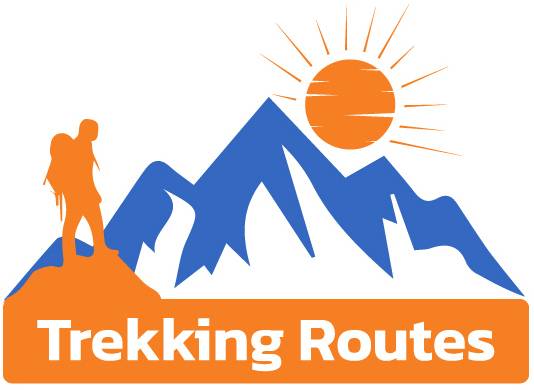The Everest Base Camp (EBC) trek is one of the most rewarding adventures in the world, offering stunning views of the Himalayas, a glimpse into Sherpa culture, and a sense of achievement that stays with you forever. However, many aspiring trekkers wonder how challenging this iconic trek is. As a professional trekking agency, Trekking Routes, we aim to provide you with a comprehensive breakdown of the challenges and practical tips to help you succeed.
The difficulty of the EBC trek depends on various factors, including altitude, weather, physical fitness, and preparation. While it doesn’t require technical climbing skills, the trek demands endurance, determination, and proper planning. Here’s everything you need to know about the challenges and how to overcome them.
Altitude and Acclimatization
The most significant challenge on the Everest Base Camp trek is the altitude. The trek begins in Lukla at 2,860 meters (9,383 feet) and gradually ascends to 5,364 meters (17,598 feet) at Everest Base Camp. The thin air at high altitudes means reduced oxygen levels, which can make breathing difficult and lead to Acute Mountain Sickness (AMS) if you ascend too quickly.
Acclimatization is the key to a successful trek. At Trekking Routes, we design itineraries with adequate rest days in critical spots like Namche Bazaar and Dingboche. These stops allow your body to adapt to the reduced oxygen levels, helping to minimize the risk of AMS. Symptoms such as headaches, nausea, and dizziness should not be ignored, as they can worsen if left untreated.
You can further reduce the risk of AMS by drinking plenty of water, eating light meals, and avoiding alcohol. Our experienced guides are trained to recognize early signs of altitude sickness and will ensure your safety throughout the trek.
Technicality, Gear, and Equipment
Although the EBC trek does not involve technical climbing, the terrain is rugged and demands proper gear. You will be trekking through rocky paths, steep ascents, and descents, often on uneven trails. Without the right equipment, these challenges can quickly become overwhelming.
We recommend investing in high-quality, waterproof trekking boots with good ankle support. These will protect your feet from blisters and provide stability on uneven surfaces. Layered clothing is essential for adjusting to the ever-changing temperatures. You’ll need thermal wear, fleece jackets, windproof outer layers, gloves, and a warm hat to tackle the cold.
Carrying trekking poles is highly beneficial, especially during descents, as they reduce the strain on your knees. At Trekking Routes, we provide a detailed packing list to ensure you are well-prepared for the journey.
Physical and Mental Fitness
Completing the Everest Base Camp trek requires a good balance of physical and mental fitness. You will be walking for 5 to 7 hours daily for around two weeks, which can be physically exhausting. Your legs, back, and endurance will be put to the test as you tackle the varying trail conditions.
You don’t need to be a professional athlete, but preparing your body through regular training is essential. Focus on activities such as hiking, running, cycling, and strength training. Incorporate stair climbing into your routine to simulate the uphill and downhill sections of the trek.
Mental resilience is equally important. The trek will test your patience and determination, especially during long, cold days. Staying positive and motivated, even in tough moments, will help you push through challenges.
Proper Planning and Itinerary
A well-thought-out itinerary can make a significant difference in how manageable the trek feels. At Trekking Routes, we carefully design our itineraries to balance daily trekking hours, acclimatization days, and rest periods. Our goal is to give you enough time to enjoy the journey while ensuring you adapt to the altitude safely.
Rushing through the trek increases the risk of altitude sickness and fatigue. A slow and steady approach is always better for your safety and overall experience.
Diet and Hydration
Maintaining proper nutrition and hydration is crucial for staying strong and energized during the trek. The tea houses along the trail offer a variety of meals, ranging from traditional Nepali dishes like Dal Bhat to international options like pasta, pancakes, and fried rice. High-carb meals are essential for sustaining energy during long trekking days.
We recommend drinking at least 3 to 4 liters of water daily to stay hydrated and prevent altitude sickness. Ginger tea and garlic soup are popular choices among trekkers for their reputed health benefits. Avoid consuming alcohol, as it dehydrates the body and can worsen altitude-related issues.
Carrying your own snacks, such as energy bars, nuts, and dried fruits, can be helpful for quick boosts of energy between meals.
Does Choosing the Right Season for the Everest Base Camp Trek Matter?
Yes, the season you choose for the trek plays a significant role in determining its difficulty. The best times to trek are during spring (March to May) and autumn (September to November). These months offer stable weather, clear skies, and optimal trail conditions. You can enjoy stunning views of the mountains and avoid the challenges posed by extreme weather.
Trekking during winter (December to February) is more demanding due to freezing temperatures and snow-covered trails. Similarly, the monsoon season (June to August) brings heavy rain, muddy paths, and increased risk of landslides. However, off-season treks can be appealing for those seeking solitude and unique experiences.
Unpredictable Weather
The weather in the Everest region can change rapidly, even during the best trekking seasons. Sudden snowfall, strong winds, or rain can make the trails slippery and challenging. This unpredictability requires you to be prepared for all conditions.
Our guides at Trekking Routes closely monitor weather forecasts and adjust the itinerary as needed. Packing a good-quality waterproof jacket, rain cover for your backpack, and extra layers will help you stay comfortable in changing weather.
Landslides, Rockfall, and Losing the Path
While the trails to Everest Base Camp are well-marked and heavily traveled, natural hazards like landslides and rockfall can occur, especially in monsoon season. Losing the path is unlikely if you trek with an experienced guide, as they are familiar with the region and know how to navigate safely.
At Trekking Routes, our guides prioritize your safety and ensure you stay on the correct trail. Hiring a guide not only minimizes risks but also enhances your overall trekking experience with cultural insights and local knowledge.
Food and Accommodation
Food and accommodation along the trek are basic but sufficient. Tea houses provide nourishing meals and simple rooms with twin beds, blankets, and pillows. The quality of food and lodging decreases as you ascend, so it’s essential to manage expectations.
Higher-altitude tea houses often have shared bathrooms and limited hot water. Electricity and Wi-Fi are available for an extra cost but may not always be reliable. At Trekking Routes, we pre-book accommodations to ensure you have a comfortable place to rest after a long day of trekking.
Injuries and Medical Attention
Common injuries on the EBC trek include blisters, sprains, and muscle strains. Altitude-related issues like AMS or more severe conditions like High Altitude Pulmonary Edema (HAPE) and High Altitude Cerebral Edema (HACE) can also occur.
Our guides carry a well-stocked first aid kit and are trained to handle emergencies. In case of severe health issues, helicopter evacuations are available but require comprehensive travel insurance. We strongly advise all trekkers to purchase insurance that covers high-altitude trekking.
Conclusion
The Everest Base Camp trek is a challenging but achievable adventure for those who prepare well and have the right mindset. At Trekking Routes, we are committed to ensuring your journey is safe, enjoyable, and memorable. By providing expert guides, tailored itineraries, and comprehensive support, we make the trek accessible for trekkers of all fitness levels.
With proper preparation, the breathtaking views of Mount Everest and the surrounding peaks will make every challenge worth it. Take the first step toward your Everest Base Camp adventure today—contact Trekking Routes to start planning your journey!







0 Comments